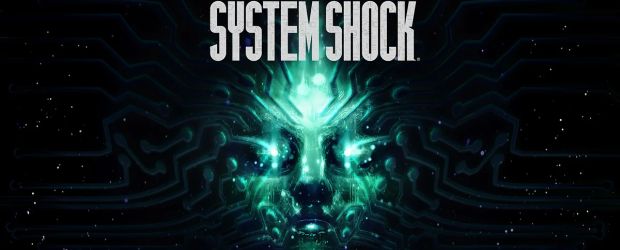Switch to: German
Hard to believe, but now the time has come: 7 years after it was first announced, we check how good the remake of System Shock turned out.
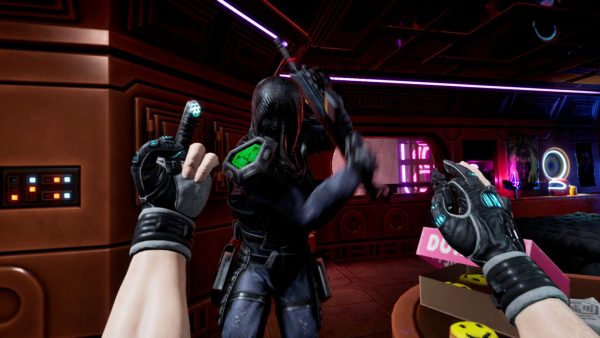
The seasoned gamers among us will still remember playing 1994’s System Shock by Looking Glass Studios. The game had set many new standards that still exist in many modern games today. In addition, System Shock is considered to be the spiritual father of Bioshock. Now almost 30 years later we’re allowed to meet Shodan again at the Citadel station. The remake’s true to the original. This has certain advantages but also disadvantages. For the nostalgic among us it’s a nice homage to wallow in old memories, but whether the title is worthwhile for younger audiences remains to be seen.
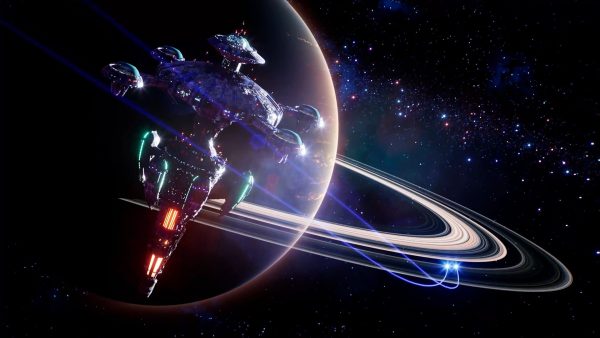
Let’s start from the beginning. As soon as you start the game, you have the opportunity to customize your gaming experience. You can set story depth, combat, cyber and puzzle difficulties. And here comes the first confrontation between the familiar and modernizations. You can set the above game options at the beginning, but not during the game. That means if you realize that the fights are too simple, you don’t have the option to change it unless you start over. Other comfort functions are not included, opposite to the original System Shock which has acted as a kind of forefather in the gaming industry. Some weapons or inventory functions that were new and innovative back then seem quite clunky today.
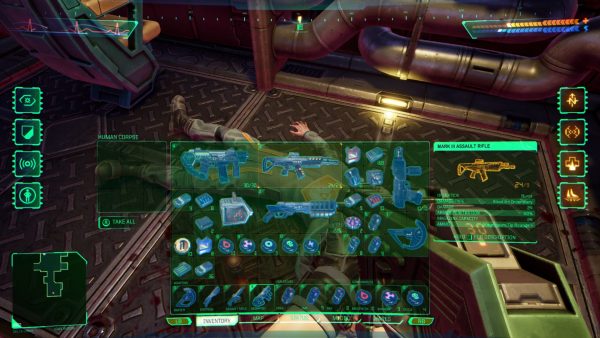
The intro already managed to put a smile on our faces. At this point one notices a slight modernity. While the original title showed itself here in a rather simple narrative structure, you can see a beautifully presented introduction at the beginning. Arriving in the game world, we first notice a nice “pixel look”. It’s not a simple pixel look that you know from various other games, but here a lot of pixel groups are used in each texture, which creates a certain CRT monitor look without using these artificial interlace strips, which are usually rather annoying. The lighting plays its part and really underlines the game’s atmosphere. But what is quickly missed here, at least by veteran players, is the music from the original title, which is not a loss, however, because the new musical atmosphere makes the title appear somehow darker and more depressing. Whether this was a stylistic or legal decision, we can’t tell.
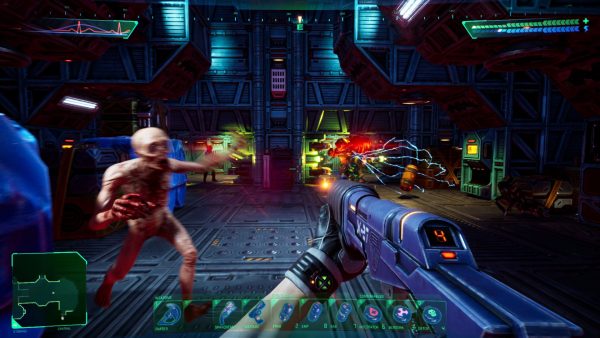
The map was adopted almost 1:1 (we found secrets that were DEFINITELY not in the original) as well as the story, which is very nice, and the English voice over is well done, but we missed the localised voice messages. These are not important for the comprehensibility of the game, since the messages also appear as text, but the voice output had its, shall we say, certain charm. So we fight our way through the different levels of the Citadel station and try to survive in combat. Fortunately, the controls are now pretty much matching a first-person shooter, in order for you to handle the fights, which can sometimes be tough depending on the level of difficulty, more easily. Especially on the higher levels of difficulty you have to be use ammunition and healing stims wisely. The difficulty level seems to ramp up pretty quickly opposite to the original game, but maybe we’re just glorifying the past. On the space station we also encounter switch puzzles which, depending on the level of difficulty selected, can become a real headache.
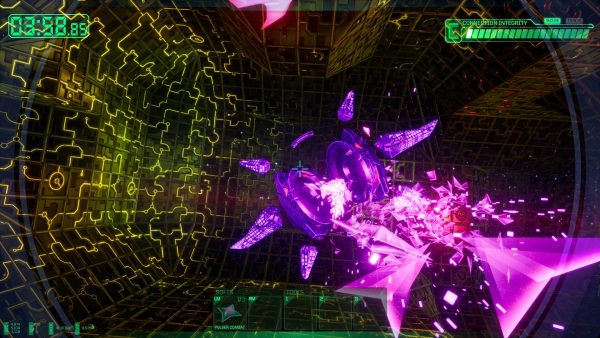
The remake marks our return to Cyberspace with all its arsenal, which we already experienced back then. In Cyberspace we just need to kill or, er, erase programs and shut down nodes. This then affects things like barriers or doors on the space station. But the even bigger opponent is the inventory, which is quite small. As in the original title, we have to think very carefully about what we take with us. In addition, not every item is really useful in the first place. Fortunately, rubbish is also designated as rubbish, but it can also be recycled in exchange for credits. Therefore everything on the station has a certain value. You can use credits to get medicine, ammunition or even weapon upgrades, among other things. Inventory management becomes very important, especially in the midgame. This forces us to consider sacrificing a smaller weapon for a railgun later in the game. Speaking of weapons and ammunition: The enemies contained in the game react differently to them. Naturally fighting mutants, robots or plant creatures feels rather different from each other.
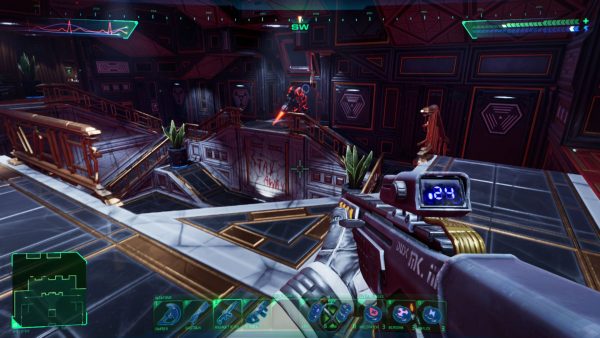
Nightdive Studios haven’t neglected the role-playing aspect to the game either. You won’t be able to assign stats to your character, but you’ll be able to gather upgrades. Among other things, you can run faster, jump higher or get small inventory upgrades. As we quickly notice, the game challenges the player on several levels. Of course, this has a different effect depending on the selected level of difficulty. In addition, System Shock dispenses with modern game mechanics that require too much hand-holding, and it’s aimed more at players who like survival games.
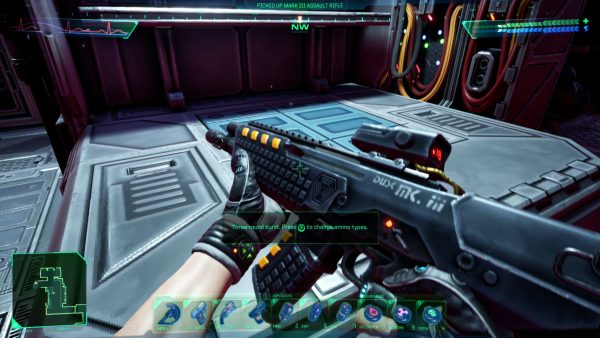
Conclusion
After all these years it was nice to kick Shodan’s digital rear end again. While the little amount of hand-holding was refreshing in this day-and-age, some quality of life updates would have been nice, similarly to how the remasters of Day of the Tentacle or Command & Conquer have shown. We found the graphics to be very nice and, above all, very fitting to the original game’s aesthetics. Of course, this will not appeal to everyone, which is perfectly fine. What we rather missed was the old soundtrack, even if the new music emphasizes an even more menacing and dark atmosphere.
All in all, Nightdive Studios created a great but not perfect remake of System Shock. For those who are unsure whether the asking price of €39.99 / £34.99 / $39.99 is worth it and the game’s visuals and controls match your expectations, you’re welcome to explore the entire first level in the game’s demo on Steam.
System Shock is available on the Epic Games Store, GOG and Steam. Ports for macOS, Linux, PS5, PS4, Xbox Series X|S and Xbox One are scheduled to be released at a later date.
We used the PC version which the publisher provided to us to create the screenshots.



